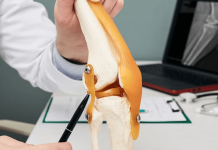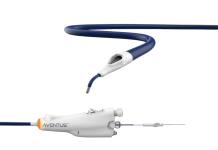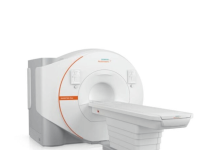Stereotaxis is purchasing a Minneapolis-based electrophysiology (EP) catheter maker to further enhance its minimally invasive endovascular surgical robotics technology.
St. Louis–based Stereotaxis did not disclose how much it is paying for Access Point Technologies in its after-hours news release. The transaction, paid with Stereotaxis stock, includes an upfront payment and additional contingent payments based upon key regulatory and commercial milestones.
Related: Proprio, Biedermann partner on AI-powered spine surgery
“Acquiring APT provides Stereotaxis with high-quality catheter development and manufacturing capabilities, and will amplify and accelerate Stereotaxis’ efforts to advance the treatment of complex arrhythmias and the adoption of robotics broadly within endovascular surgery,” said Stereotaxis CEO David Fischel. “The acquisition offers valuable commercial synergies, strengthens us strategically, and was pursued in a financially prudent and shareholder-friendly fashion.”
Stereotaxis officials estimate that APT will contribute roughly $5 million in annual revenue during the first year after the acquisition. Pending customary closing conditions, the acquisition is expected to close in the third quarter.
Access Point Technologies President Steve Berhow said the acquisition provides APT with an expanded home in the growing field of electrophysiology.
“It allows us to continue contributing our unique expertise in high-quality EP catheters while also playing a central role in an exciting new mission of pioneering endovascular robotics,” he said.
An important player in the highly competitive surgical robotics space, Stereotaxis provides surgical robotics that incorporates magnets for minimally invasive endovascular intervention. Its products include the Genesis RMN system, Vdrive robotic navigation system and Niobe robotic magnetic navigation system.
The company recently submitted its Magnetic Interventional Ablation Catheter (MAGiC) for both European and U.S. regulatory approval. MAGiC is a robotically navigated magnetic ablation catheter designed to perform minimally invasive cardiac ablation procedures.
Fischel provided more business updates in an accompanying first-quarter earnings release.
“Formal testing of our smaller highly-accessible robot is advancing well, with the majority of tests successfully completed,” the company said. “Regulatory submissions for the robot are expected during the second quarter, and European regulatory clearance is anticipated mid-year followed by FDA clearance in the second half of the year. We also expect commercial launches later this year of a guidewire that expands our technology into new indications, a comprehensive product ecosystem in China, and a digital surgery solution enabling broad operating room connectivity.”
Revenue was up 5% year-over-year to $6.9 million during the first quarter ended March 31, 2024. Losses narrowed a bit compared with a year ago. Stereotaxis ended the quarter with $18.2 million in cash and cash equivalents — and no debt.
STXS shares were up more than 3% to $2.24 apiece in after-hours trading.
“We are continuing to advance our technology and strategy in a financially prudent fashion,” Fischel said. “We retain a strong balance sheet which allows us to bring our transformative product ecosystem to market, fund its commercialization, and reach profitability. We have multiple shots on goal for breakout growth in 2025 and beyond.






